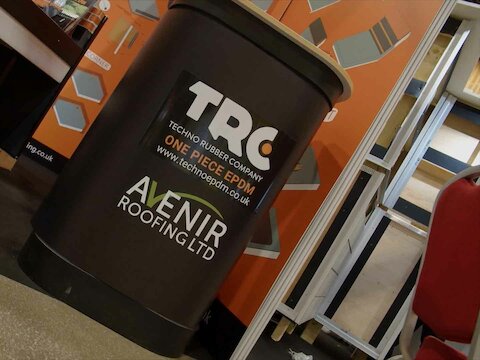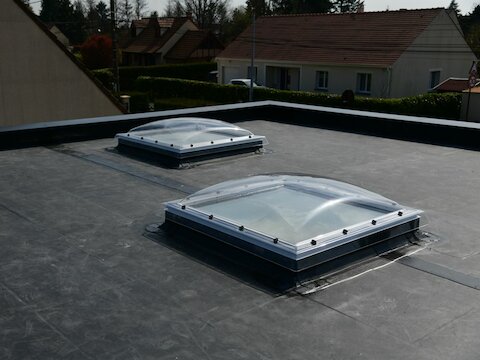EPDM Rubber vs Felt, Which One is Best for My Flat Roof?
When it comes to replacing the material on your flat roof, you may start to question which choice is best: EPDM rubber or felt? Though both come with pros and cons, the truth is that there’s no right or wrong answer. One does not outweigh the other, with many flat roofs around the UK featuring at least one of the materials.
EPDM Rubber Roof
After being incredibly successful across the pond, EPDM rubber roofs are now a popular choice right here in the UK. Ethylene Propylene Diene Monomer has a wide range of benefits to it, which is why so many homeowners, roofers and construction workers choose it.
Firestone RubberCover Pros
- Strong, Durable and Long Lasting
Recognised for its superior strength, Firestone RubberCover EPDM has been expertly designed to handle hot and cold temperatures as well as harsh weather conditions. It’s this that aids its 50-year life expectancy.
- Practically Maintenance Free
Being low maintenance means that once the material is installed, you don’t have to spend that much time worrying about it. Some general TLC will be required, though this mainly includes removal of debris around gutter areas and regular inspections. This will help to ensure the roof’s longevity.
- Easy Enough to Work With
Even if you’re not a roofing expert, you’re more than capable of working with Firestone EPDM. Thanks to the single-ply membrane, the material can be installed in just one piece, making the fitting process quick and simple compared to other options.
- An Attractive Appearance
Thanks to the easy installation process, there should be no mess when working with EPDM. This will allow the finish to be of a professional standard, leaving you with high-quality results that look great. It can be fitted to a wide range of flat roofs, and when used, a smooth, sleek finish is achieved.
Firestone RubberCover Cons
- It’s Not Unbreakable
No, we’re not talking about M. Night Shyamalan’s smash hit film released in 2000 that stars Bruce Willis and Samuel L. Jackson here. What we mean is that despite its life expectancy of 50 years, Firestone RubberCover EPDM can still break; whether it’s from general wear and tear or something more forceful. In most cases, you will be able to carry out some hassle-free repair work. If you do need to carry out any repairs, look to this blog post for some helpful advice: https://www.avenirroofing.co.uk/2018/11/how-to-repair-epdm-roofing/
Modern Torch-On Felt Roof
Torch-on felt roofing simply describes the method in which the material is applied. Typical installations use a three-layer system; perforated underlay, a 2mm underlay layer, then 4-5mm felt.
Felt Pros
- It’s Reliable and Robust
Despite it not being the stronger of the two, felt roofing is still a reliable choice. It has the ability to withstand a wide range of elements, including wind, rain and snow. What’s more, its strength is what makes it resistant to tears, leaks and damage from debris.
- A Cheaper Alternative
Felt roofing is an inexpensive material choice, which is what often makes it so appealing. However, if you choose this, you have to remember that a professional roofer is required to carry out the installation, meaning you’ll have to pay for their time and effort too.
Felt Cons
- Repairs Look Patchy
In the event of damage, repairs can be made by torching a new piece of felt directly on top of the broken area. Though easy enough to complete, it can leave the roof looking patchy.
- You Can’t DIY
Now, if you’re not a dab hand at DIY work, this may be news to your ears. However, the downside is that it means you have to rely on someone else to do the work for you. This may not be an issue, but it may result in you having to work around someone else’s schedule rather than doing the work yourself at a date and time that suits you.




